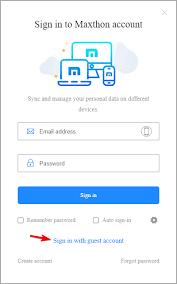In today’s digital landscape, web browsers have become essential tools for navigating the vast expanse of online resources. However, they are not just gateways to information; they also represent significant vulnerabilities, especially when it comes to file downloads. As individuals and organisations increasingly rely on the Internet for day-to-day operations, the risks associated with cyber threats present a formidable challenge.
Cyber adversaries often exploit these entry points by embedding malicious files in seemingly innocuous downloads. Therefore, organisations must adopt robust security solutions that can safeguard browsing activities while proactively preventing harmful infiltrations.
To combat these threats effectively, integrating browser security measures with advanced file prevention technologies offers a multidimensional defence. Such an approach fosters a secure environment where users can confidently explore the web without fear of compromising sensitive data.
Furthermore, enhancing overall cybersecurity posture demands continuous vigilance and updates to security protocols as new threats emerge. By prioritising both browsing safety and download integrity, organisations can build resilience against the ever-evolving landscape of web-based threats. Ultimately, this comprehensive strategy not only protects assets but also empowers teams to navigate their online environment more securely.

Browser Security Functionality
Browser security functionality isolation technology represents a crucial advancement in safeguarding users while they navigate the web. By utilising sophisticated isolation techniques, this solution effectively quarantines web content in a secure cloud-based environment.
This method keeps potentially harmful elements—such as malicious websites and drive-by downloads—completely separate from the user’s local device. Instead of executing any suspicious content directly on an endpoint, the browser offloads this risk to the cloud.
Users can interact with online resources without fearing that their devices might become infected. The cloud environment acts as a protective barrier, containing threats and neutralising them before they can impact personal or organisational systems.
As a result, individuals enjoy enhanced browsing experiences while organisations can maintain operational integrity. This proactive approach not only mitigates risks but also fosters trust in digital interactions. Overall, isolation technology is transforming how we think about browser security and allows users to explore the internet with confidence.
In today’s digital landscape, safeguarding against online threats is more critical than ever. The browser security solution harnesses real-time threat detection mechanisms to combat a myriad of web-based dangers, effectively identifying both known vulnerabilities and unknown hazards.
As users navigate the Internet, this system meticulously analyses web content in real-time and can swiftly block phishing attacks. The File Preventive Solution Features offer a sophisticated layer of defence for organisations by utilising multi-engine antivirus scanning. This cutting-edge approach combines the strengths of several leading antivirus engines, enhancing the scanning process for downloaded files.
As files are downloaded, they undergo rigorous examination from multiple engines concurrently. This collective intelligence allows for a more thorough analysis compared to single-engine solutions. It effectively identifies an extensive range of known malware signatures and behavioural patterns.

By cross-referencing data from various antivirus vendors, this system minimises the chances of false negatives and maximises detection rates. Organisations can feel secure knowing that even the most elusive threats are likely to be intercepted before they can inflict harm.
Additionally, this multi-faceted protection is vital in today’s ever-evolving cybersecurity landscape. With new malware emerging daily, relying on a single antivirus solution can leave significant gaps in security. The File Preventive Solution stands as a robust guardian against malicious files, ensuring comprehensive protection for sensitive organisational data, with the aim to steal sensitive information and prevent malware downloads that could compromise entire systems.
This proactive approach protects individual users and fortifies organisational defences against emerging threats lurking on the web. With each interaction, potential risks are assessed and neutralised before they reach their target.
Furthermore, the solution offers organisations invaluable insights into malicious websites, ensuring users are redirected away from harm’s way. By keeping pace with evolving cyber threats, this technology plays a crucial role in maintaining a secure online environment for all users.
In today’s rapidly evolving cyber landscape, organisations face persistent threats from sophisticated malware and zero-day vulnerabilities. To counter these challenges, suspicious files are subjected to advanced sandbox analysis.
During this process, the files are executed within a controlled environment that mimics natural systems but is isolated from the organisation’s actual network. This safe space allows security teams to monitor how these files behave when they run closely. They can observe whether the files attempt unauthorised actions, communicate with external servers, or exploit system vulnerabilities.

This dynamic observation plays a crucial role in identifying potential threats that traditional antivirus solutions might miss. By understanding the behavioural patterns of such malicious entities, organisations can develop targeted response strategies. Furthermore, this proactive approach not only mitigates immediate risks but also enhances overall cybersecurity resilience against emerging threats.
In today’s digital landscape, ensuring the safety of downloaded files is paramount for any organisation. This is where Content Disarm and Reconstruction (CDR) technology comes into play. By deploying CDR, organisations can effectively neutralise potential threats from malicious files before they reach users.
This robust security measure allows employees to download documents and access files from the web with complete confidence. It significantly reduces the risk of malware and other security vulnerabilities, creating a safer working environment.
With CDR in place, teams can remain productive without constant interruptions or downtime caused by security breaches. They are empowered to share information freely, knowing that their communications won’t bring hidden dangers into the system.
Overall, implementing CDR not only boosts usability but also strengthens organisational resilience against cyber threats. This allows businesses to strike a crucial balance between maintaining productivity and protecting valuable data assets.

With advanced sandbox analysis in place, businesses can feel more secure knowing they have an effective mechanism for detecting and addressing cyber dangers before they inflict damage on critical systems.
Content Disarm and Reconstruction (CDR) is an advanced file preventive solution designed to enhance cybersecurity measures. This innovative technology meticulously sanitises downloaded files by stripping away potentially malicious content, ensuring that users remain safe while browsing the web.
When a file is processed through the CDR system, threats such as viruses, malware, and other security risks are removed without compromising the file’s usability. The system intelligently reconstructs these sanitised files, creating secure versions that retain their original functionality.
Organisations leveraging CDR can confidently allow users to download and access files from various online sources. This not only safeguards individual devices but also protects more extensive networks from potential breaches caused by hazardous downloads.
In a world where cyber threats are ever-evolving, employing a robust CDR solution serves as a critical line of defence for businesses striving to maintain security and protect sensitive information. By integrating this technology into their systems, organisations can foster a safer digital environment for their employees and customers alike.
The benefits of integration in cybersecurity are profound, particularly when it comes to protecting organisations from web-based threats and malicious file downloads. By uniting browser security with advanced file preventive solutions, companies can achieve a holistic defence strategy.
Real-time threat detection plays a fundamental role in this integrated approach. It allows organisations to promptly identify and mitigate risks, ensuring that potential threats are neutralised before they can inflict harm.

Additionally, multi-engine antivirus scanning enhances protection by leveraging various detection technologies. This layered defence reduces the likelihood of malware slipping through undetected.
Sandbox analysis further strengthens security measures by allowing files to be executed in a controlled environment, where their behaviour can be monitored without endangering the organisation’s network.
Moreover, Content Disarm and Reconstruction (CDR) technology helps strip potentially harmful code from files while preserving its usability.
Incorporating these advanced solutions effectively arms organisations against a wide array of cyber threats. As a result, businesses not only bolster their defences but also gain peace of mind knowing that they have comprehensive protection in place against ever-evolving cyber risks.
Enhancing an organisation’s security posture is more critical than ever in today’s digital landscape. The integrated solution plays a pivotal role in achieving this by proactively addressing the risks associated with everyday online activities.
By effectively preventing users from visiting malicious websites, the system reduces exposure to various cyber threats, such as phishing attacks and malware infections. This safeguards not only individual user devices but also protects the entire network from potential breaches that could compromise sensitive data.
Moreover, the solution offers robust protection against harmful file downloads. Users are safeguarded from inadvertently downloading software that could install viruses or ransomware, which often go unnoticed until it’s too late. By streamlining these protections into a cohesive framework, organisations can create a fortified perimeter around their digital assets.

This layered defence strategy fosters a more secure environment for employees to work efficiently without the constant fear of cyberattacks looming overhead. Ultimately, by integrating this advanced approach to security, organisations can significantly reduce the likelihood of successful cyber intrusions and bolster their overall resilience in the face of evolving threats.
In conclusion, the seamless integration of advanced browser security measures with sophisticated file protection solutions provides organisations with a formidable defence against the myriad of web-based threats they face today. This multi-faceted approach significantly enhances overall cybersecurity resilience.
By implementing isolation technology, companies can shield their internal systems from potential attacks that occur during web browsing sessions. Additionally, real-time threat detection ensures that any emerging vulnerabilities are identified and dealt with immediately, reducing exposure to risks.
Employing multi-engine antivirus scanning further fortifies defences by utilising various detection engines to catch malware that a single engine might miss. Moreover, sandbox analysis allows for safe testing of suspicious files in isolated environments before they can impact the organisation’s network.
Finally, Content Disarm & Reconstruction (CDR) technology plays a crucial role in sanitising potentially harmful files by stripping away malicious code while retaining necessary content. Together, these strategies create a comprehensive safety net that effectively mitigates the risks associated with internet use and file downloads.
Ultimately, this holistic approach not only protects digital assets but also ensures business continuity in an increasingly threat-laden cyber landscape.
How to Enhance Browser and File Security on Maxthon
- Update Maxthon: First, ensure that you have the latest version of Maxthon installed. Open the browser, click on the menu icon, and navigate to ‘Settings’. Then, select ‘About Maxthon’ to check for updates and install them if available.
- Enable Privacy Settings: To enhance your browsing privacy, go to Settings and click on the Privacy tab. Here, enable options such as “Block Third-Party Cookies” and “Do Not Track” requests.
- Utilize a VPN: Consider using a Virtual Private Network (VPN) while browsing with Maxthon. A VPN encrypts your internet traffic, providing an additional layer of security against potential data interception.
- Manage Site Permissions: Go to Settings, then select ‘Site Permissions’. Review and modify permissions for each site, limiting access to your location and camera whenever necessary.

- Regularly Clear Cache and Cookies: To remove potentially sensitive data stored during previous sessions, access ‘History’ and choose ‘Clear Browsing Data’. For improved security, regularly delete cache, cookies, and browsing history.
- Use Antivirus Software: Always keep a reliable antivirus or antimalware program active on your device. This helps protect against threats that can compromise both fire safety and overall system integrity during web use.
- Back-Up Important Files: Regularly back up critical files from your computer to an external drive or cloud storage service. This ensures data recovery in case of ransomware attacks or other virus incidents.
- Stay Informed About Phishing Scams: Familiarize yourself with common phishing tactics and be cautious of emails or links requesting personal information while using Maxthon.
By following these steps, you can substantially enhance both browser functionality and file security while using Maxthon effectively.

